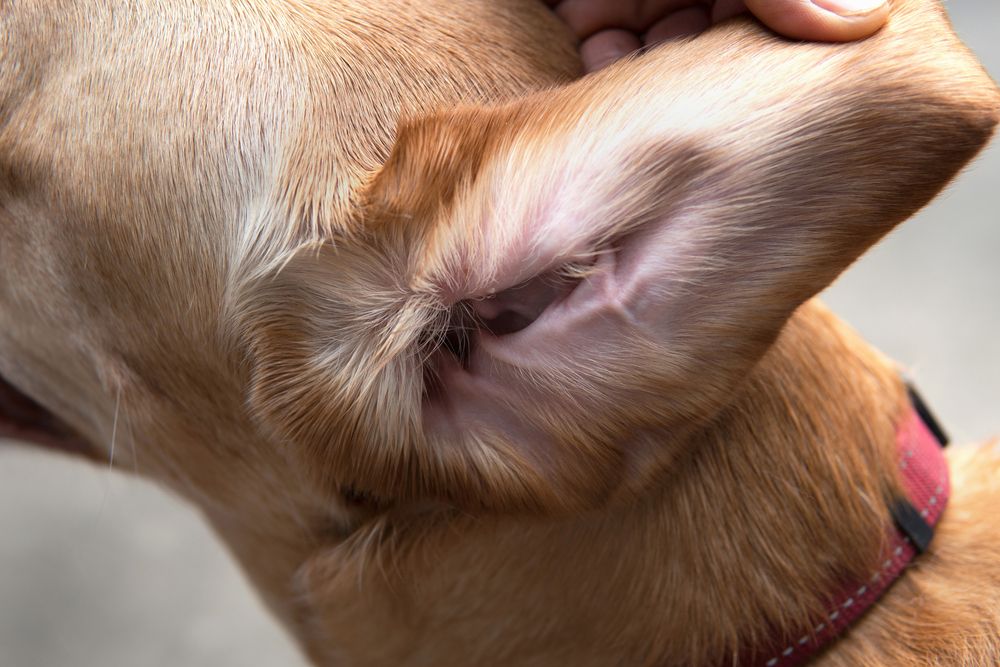There’s nothing quite like the sound of a dog shaking their head at full force in the middle of the night. Whap-whap-whap. Ears flapping like mad.
You sit up, bleary-eyed, wondering if the poor thing’s just itchy or if you’re about to enter the wonderful world of vet bills.

When your dog starts pawing at their ears or flinging their head like they’re trying to detach it, you know something’s off. But is it an infection? Is it ear mites? Or is your dog just being dramatic (they’re excellent at that, aren’t they)?
Let’s get into it.
Same Symptoms, Totally Different Issues
Here’s the kicker. Ear infections and ear mites often look pretty similar at first. Both can cause redness, itchiness, that weird black gunk, and nonstop scratching.
But the causes? Totally different beasts.
Mites are tiny parasites, actual creepy crawlies living in your dog’s ears. Gross, yeah. Meanwhile, ear infections are usually caused by bacteria, yeast, or both. Sometimes they’re secondary to allergies, moisture, or something as simple as trapped dirt.
Same scratching. Very different fix.
A Real-Life Ear Mystery
A dog owner once told me their pup started scratching behind one ear like it was a full-time job. They figured it was just a tick or maybe a bit of dust from rolling around. Gave it a wipe with a tissue, job done.
Two days later? Full-blown meltdown. Head tilt, constant yelping, even walking a bit sideways. Turns out, it was a bacterial infection deep in the ear canal, not mites, not dirt, just a nasty bug brewing in silence.
It’s wild how fast these things can go from “hm, weird” to “where’s the emergency vet?”
So How Do You Tell the Difference?
Well, you kind of… can’t. Not really. Not without your vet getting in there with that little scope thing and maybe doing a swab.
But you can look for clues. Ear mites tend to cause a dark, coffee-ground-looking gunk. Think crumbly and dry. It also stinks in a very musty way.
Infections, on the other hand, can smell like bad cheese or dirty socks. The discharge might be yellow, green, or thick and waxy. Some infections cause swelling and serious pain. Your dog might even cry out if you touch the ear.
But again, unless you’ve got a microscope at home (and, let’s be honest, most of us don’t), you’re just guessing.
Don’t Treat It Yourself
This is where a lot of people go wrong, and I totally get it. You notice the itching, you Google a bit, maybe even grab some over-the-counter drops. Then you wait, hoping it clears up.
Except here’s the thing: treating the wrong issue can make everything worse. Using mite treatment on an infected ear? Waste of time. Using antibiotic drops when it’s mites? Still wrong. You could delay proper treatment and make your dog more miserable.
And let’s not even talk about cotton buds. Please. Don’t go digging.
What Happens at the Vet?
Your vet will likely look inside the ear with an otoscope (that little flashlight cone thing), check for swelling, and maybe take a sample of the gunk to look at under a microscope.
If it’s mites, they’ll probably give you a topical parasiticide, sometimes a spot-on that also helps with fleas and ticks. Super handy.
Articles You Might Love
If it’s an infection, your dog might need antibiotics, antifungal meds, or anti-inflammatories, depending on the cause. Some dogs need daily ear cleaning with a vet-approved cleaner. Others need drops. Occasionally, oral meds too.
The important part? You’ll actually be treating the right thing.
Some Breeds Just Have Bad Luck
If you’ve got a dog with floppy ears like a Cocker Spaniel or a Basset Hound, welcome to the club. Those adorable ear flaps trap moisture like a sponge, and that creates the perfect storm for bacteria and yeast.
Allergy-prone breeds like Bulldogs and Labradors can also get recurrent infections. Some dogs even develop ear issues just from eating the wrong protein.
So yeah, if your dog’s got cute ears that hang low, you might be in this for the long haul.
Prevention Is Way Easier Than Treatment
Once your dog’s ears are clear, keeping them clean is key. But don’t go overboard. Too much cleaning can actually irritate the ear canal.
Use a vet-approved ear cleaner once a week (or as recommended), and always dry your dog’s ears after swimming or baths. That lingering dampness? Perfect breeding ground for nasties.
Also, after hikes or roll-arounds in tall grass, give those ears a once-over. Tiny seeds, bugs, or just random dirt can sneak in and cause big problems later.
Tried Home Remedies? Still No Better?
You’re not alone. So many dog parents try coconut oil, apple cider vinegar, or olive oil before finally heading to the vet. And honestly, those things can sometimes help soothe irritation short term.
But they won’t fix mites. They won’t beat a stubborn infection. And in some cases, they can make things worse by trapping moisture or irritating already sore skin.
If you’ve given it a shot and your dog’s still scratching, shaking, or sulking? Time to bring in the pros.
Having a dog with ear issues is frustrating, for sure. It’s smelly, messy, and sometimes scary. But the good news is, most of these problems clear up quickly once you get the right diagnosis and treatment.
And once you’ve been through it once? You learn fast what’s normal and what needs attention.
Is your dog showing signs of an ear issue that’s been dragging on too long?